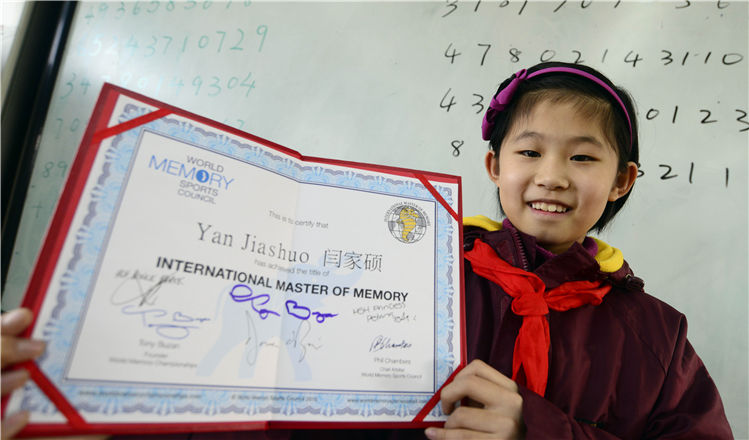Threeway split makes the neutrino special
Updated: 2015-12-28 08:20
By Cheng Yingqi(China Daily)
|
||||||||
For high-energy physicists, the neutrino is one of the most fascinating subatomic particles. Its name is self-explanatory, to some extent: the particle is neutral and part of a "trinity" that consists of the electron, muon and tau neutrinos, which can transform themselves into each other under certain circumstances.
Neutrinos exist everywhere in the universe, and trillions fly through our bodies every second unnoticed, because they are so small and seldom interact with other matter. Even bananas constantly emit neutrinos, because of the potassium they contain.
The particle's existence was first hypothesized in 1930 by Wolfgang Pauli, an Austrian-born Swiss theoretical physicist. In 1933, the Italian physicist Enrico Fermi, who built the world's first nuclear reactor in the United States, called it the "neutrino" and predicted its different forms.
However, it was not until 1956 that scientists firstly succeeded in observing the ghostly particle, and it wasn't until 1995 that the Nobel Prize in Physics was awarded to two US scientists for their contribution to the discovery.
In 1962, US physicists Leon M. Lederman, Melvin Schwartz and Jack Steinberger reported the discovery of the second form, the muon neutrino, leading to them being awarded the Nobel Prize in 1988.

Since the 1980s, Japan and the European Organization for Nuclear Research, also known as CERN, have joined the US as the dominant forces in neutrino research. Two Japanese scientists shared the 2002 Nobel Prize with a US scientist for their discovery of neutrinos in cosmic rays.
In 2000, the third type of neutrino, the tau neutrino, was observed at the Fermi National Accelerator Laboratory in the US.
Breakthroughs related to "neutrino oscillation" - the transformation of one type of particle into another - were made by Takaaki Kajita of the University of Tokyo in 1998, and by Arthur B. McDonald of Queen's University in Ontario, Canada, in 2001. This year, Kajita and McDonald shared the Nobel Prize for their work.
In 2012, Chinese scientists announced that they had also solved the puzzle, based on observations at the Daya Bay Reactor Neutrino Experiment, which had only been in operation for a few months.
"After the Daya Bay experiment, the high-energy physics community finally saw the whole picture of how neutrinos work. We have found each type of neutrino and we know how they transform into each other," said Wang Yifang, director of the Institute of High Energy Physics in Beijing.
This is not the end of the story, though, and more questions remain, including determining the exact nature of the neutrino, its mass and how it interacts with matter.
Most important, the neutrino is the physicists' only opportunity to challenge the Standard Model of particle physics, a theory that developed gradually during the latter half of the 20th century and relates to concepts such as electromagnetism and nuclear interaction, and also attempts to classify all known subatomic particles.
Since the Higgs boson - the elusive last particle predicted by the Standard Model - was discovered in 2012, physicists have been pinning their hopes on finding anomalies in neutrinos that fail to match the theory.
(China Daily 12/28/2015 page5)
- More aid from China set for Syria
- Japanese journalist reportedly being held in Syria
- New York City has warmest Christmas Eve on record
- One dead as fight leads to fatal shooting at North Carolina mall
- Trump's lead bodes well for Hillary Clinton's presidential bid
- Spanish Socialist leader insists no support for Rajoy

 China's top scientific achievements in 2015
China's top scientific achievements in 2015
 Yearend 2015: A picture and its story
Yearend 2015: A picture and its story
 Christmas celebrated across the world
Christmas celebrated across the world
 HK car show kicks off during Christmas season
HK car show kicks off during Christmas season
 10 major economic policies that will make a difference on lives
10 major economic policies that will make a difference on lives
 Santa Claus is busy in China
Santa Claus is busy in China
 Yearend 2015: Heartstopping images captured by daredevils
Yearend 2015: Heartstopping images captured by daredevils
 Girl becomes youngest Master of Memory
Girl becomes youngest Master of Memory
Most Viewed
Editor's Picks

|

|

|

|

|

|
Today's Top News
Shooting rampage at US social services agency leaves 14 dead
Chinese bargain hunters are changing the retail game
Chinese president arrives in Turkey for G20 summit
Islamic State claims responsibility for Paris attacks
Obama, Netanyahu at White House seek to mend US-Israel ties
China, not Canada, is top US trade partner
Tu first Chinese to win Nobel Prize in Medicine
Huntsman says Sino-US relationship needs common goals
US Weekly

|

|








